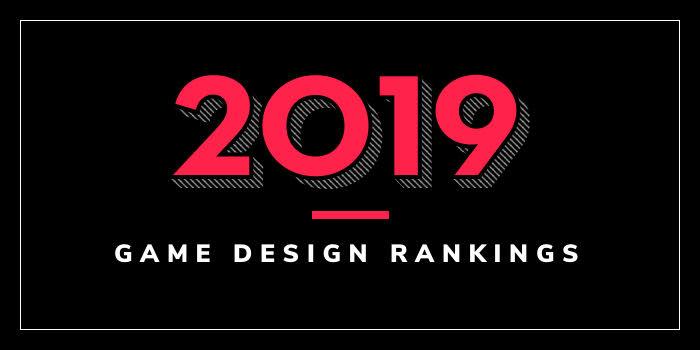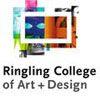
What are the top Florida game design schools?
| Ranking | School | City |
|---|---|---|
| 1 | University of Central Florida + Florida Interactive Entertainment Academy | Orlando |
| 2 | Full Sail University | Winter Park |
| 3 | Ringling College of Art and Design | Sarasota |
| 4 | University of Florida | Gainesville |
| 5 | The Digital Animation & Visual Effects School | Orlando |
Our 2019 ranking of the top 5 game design school programs in Florida. For an explanation of the ranking criteria, click here.

Established in 1963 and serving more than 66,000 students across four campuses, the University of Central Florida (UCF) is the nation’s second-largest university. Also one of the nation’s youngest universities, UCF offers around 230 degree programs across 13 colleges. One of the school’s largest programs is Game Design.
The Florida Interactive Entertainment Academy (FIEA) is UCF’s graduate video game design school. The school says that the Academy opened its doors to “a select group of future game developers and creators” in August of 2005. Today, FIEA is home to dozens of students enrolled in a variety of programs. The College of Arts and Humanities, Games & Interactive Media Department offers a BA in Digital Media with a Specialization in Game Design.
The BA "allows students to integrate the multiple domains of art, storytelling, and technology." In the Game Design Track, students "learn the history, design cultural impact and implementation of video games and video game technologies." Students will complete courses that will allow them to "build a series of prototype, casual and longer form games throughout the semester as individuals and in teams."
Other program highlights include the opportunity to participate in game jams and meet-ups, which offer networking opportunities and possible job placement.
Nicholson School of Communication and Media offers a 16-month MS in Interactive Entertainment program with three Tracks including Art, Production, and Programming. Per the school, the MS offers an “immersive, project-based video game curriculum that’s as active as it is interactive.” Students in the program will “become part of a team of fellow students” who will work together as “producers, programmers and artists on real-world projects with milestones and tight deadlines.” Projects are overseen “by some of the best video game faculty in the world.”
UCF also offers an MA in Digital Media - Visual Language and Interactive Media. Students in this program may pursue a non-thesis option and portfolios might include works of art, software or games students have designed, written articles, and proposals or projects they have created.

Established in 1979, Full Sail University serves 15,000 students enrolled in 78 Bachelor’s, Master’s, and Associate degrees in the areas of Entertainment, Media and the Arts. Graduate Certificates are also available. The Game School at Full Sail offers several programs for aspiring game designers.
Undergraduate offerings include BS degrees in Game Art, Game Design, Game Development, Simulation & Visualization, and Mobile Development. Graduate degrees include an MS in Game Design or Mobile Gaming. In the Game Art BS students will create 3D content and “take traditional art and animation principles and apply them to models that look, move and articulate artistically,” says the school. Course highlights for the program include Game Animation, Motion Capture, and Level Assembly & Lighting.
The Game Design BS is designed to enhance the students “ability to work in a game studio environment.” The program “is comprised of high-level game design and production courses that will take” students “deep into the game development pipeline.” The program covers key industry concepts influencing both systems and level designs that will prepare students to prototype and evaluate their game projects. Course highlights include Game Mechanics, Game Balancing, and Prototyping.
The BS in Game Development guides students through the entire game development cycle, from pre-production to finished product. Course highlights include Artificial Intelligence, Engine Development, and Data Structure and Algorithms. Graduates will have the ability to create program code for 3D graphic display, multiplayer gaming, artificially intelligent opponents, and real-time virtual environments.
The BS in Simulation & Visualization equips students with the programming and critical-thinking skills needed to study and design virtual systems. Course highlights include Virtual and Augmented Reality, Artificial Intelligence, and Computer Graphics. Through hands-on experience, students will develop their “tech savvy in order to keep pace with an ever-evolving industry.”
MS in Game Design coursework focuses on user experience research, production, and design. Course highlights include Methods and the User Experience, Prototyping and Content Creation, and Game Usability and Testing. The program, which allows students to choose a track that allows them to focus on a chosen area of expertise, culminates in a Game Capstone Experience.
The Mobile Gaming MS consists of graduate level mobile gaming research, emerging technologies, and the application of theoretical concepts to game design and development. Course highlights include Computer Science for Engineers, Game Development Frameworks, and Mobile Gaming Business. The program culminates in a thesis, which allows students to complete a fully playable mobile game of their own design.
The Game Art and Game Design BS degrees are available on campus and online, while the MS in Mobile Gaming is available entirely online.

Established in 1931 by circus baron John Ringling, Ringling College of Art and Design (RCAD) opened with just 75 students and 111 course offerings. Today, the school serves 1,400 students, offering BFA degrees in eleven disciplines and BA degrees in two. Just a few majors include Game Art, Computer Animation, Motion Design, Film, and Visual Studies.
The program for aspiring game designers is part of the Computer Animation Department, which houses eight state-of-the-art computer labs in addition to three open labs. Students are also experimenting with VR technology using the Oculus Rift and the HTC Vive. Degree options include a BFA with a Game Art Major, which is one of the few programs available that focuses on visual art for computer games. Per the school, students in the program will study “the basics of game design mechanics, meaningful play, interactivity, and options for creating and refining game content.” The technical aspects of 3D animation software and game engines will also be explored.
Other program highlights include visiting artists from major game studios such as Blizzard Entertainment, Epic Games, and Riot Games, and internships at these studios and others such as Electronic Arts, Insomniac Games, and Sony Online Entertainment. Graduates of RCAD enjoy a high professional placement rate at Activision, Blizzard, Cartoon Network Game Studios, Disney Interactive Studios, Electronic Arts, Epic Games, Gameloft, Hasbro, Intel corporation, LucasArts, Microsoft Game Studios, Nickelodeon Animation Studios, Riot Games, Sony Imageworks Interactive, Zynga and many others.

Founded in 1853 as East Florida Seminary, the University of Florida (UF) serves nearly 56,000 students enrolled in 100 undergraduate majors and 200 graduate programs through 16 colleges. The College of Arts houses the Digital Worlds Institute, which offers a BA in Digital Arts & Sciences (BADAS). Per the school, the program “crosses traditional college boundaries between arts, communications and technology. Students will immerse themselves in every aspect of the new and developing digital landscape — from digital illustration to 3D animation, from programming to video-game design.”
Sample courses for the program include Game Design Practices, Game Development, Digital Storytelling, Writing for Interactive Media, Wearable & Mobile Apps, Design Production Studio, and 3D Digital Animation. Entrepreneurship in New Media, Undergraduate Research Forum, and a Senior Project are also part of the program.
Other BADAS highlights include the opportunity to gain experience working on team projects, access to high-tech facilities including a 5-screen Polymodal Immersive Classroom Theater (PICT) and a Virtual Production Studio (VPS), and the cohort experience. The experience allows a select group of students to “join a community of learners in taking a set sequence of courses together.” Students will network and build relationships with their classmates, work one-on-one with faculty, and participate in discussions.
Graduates of the BADAS program have gone on to work for companies such as DreamWorks and Microsoft, as well as to form their own successful startups.

The Digital Animation & Visual Effects School (The DAVE School) is a 35,000 square foot facility located on the backlot of Universal Studios Florida, Soundstage 25. The school offers intensive and “comprehensive training” in Game Production, 3D Modeling, 3D Animation, and 3D Visual Effects. Programs for aspiring game designers include a Game Production Diploma, Game Production Associate Program, and Bachelor’s Degrees in Game Production, Motion Graphics, and Production Programming.
The Production Programming Bachelor’s is an online program with seven tracks including Game Design, Game Programming, Graphics Programming, Mixed Reality Development, Mobile App Development, Productivity, and Simulation. The 12-month Game Production Diploma covers Modeling & Sculpting, Game Production, Game Engine Fundamentals, Game Asset Production, and Animation Fundamentals.
The Game Production Associate Program offers online general education courses, and the Bachelor’s Degree in Game Production offers both general education and electives online. The Bachelor’s in Motion Graphics can be completed entirely online in just 30 months.

